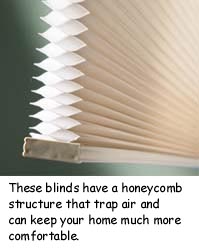 Window Coverings
Window CoveringsWhen the temperatures are expected to be high, consider keeping shades closed throughout the day. It is amazing the difference in heat gain when the sun is kept off the windows. I have blinds, thermal shades and exterior sun screens that we use on the hottest days to keep the solar gain to a minimum.
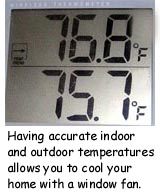 I have a digital indoor and outdoor thermometer that I use to determine when the outside temperature has dropped below the inside temperature. When the temperature outside has dropped in the evening, I have a large box fan that is tightly fitted in a back bedroom window that exhausts the hot interior air outside. This causes negative air pressure in the house, and when you open other windows in the home, you will get a nice cool breeze coming in.
I have a digital indoor and outdoor thermometer that I use to determine when the outside temperature has dropped below the inside temperature. When the temperature outside has dropped in the evening, I have a large box fan that is tightly fitted in a back bedroom window that exhausts the hot interior air outside. This causes negative air pressure in the house, and when you open other windows in the home, you will get a nice cool breeze coming in. I have built a simple thermostat to control this fan, (See a diagram and instructions here) so when the house temperature drops below 67 or so, the fan turns off automatically. Don't forget to remove the fan, close up the windows and shades in the morning to keep the air as cool as possible during the day.
We have also installed ceiling fans to keep the air moving, this helps make it much more comfortable, especially in bedrooms. In my home, I have small room air conditioners that keep an individual room cool. this is especially nice on very hot evenings when you can't cool the house with a fan because the outside air temperature it too high. If you keep the door closed these window units are a great choice.
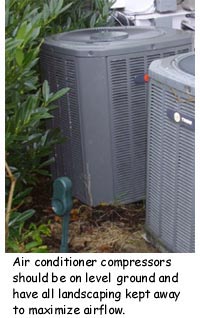 If you have a central air conditioner, there are a few items you should consider to keep it running at peak efficiency.
If you have a central air conditioner, there are a few items you should consider to keep it running at peak efficiency. 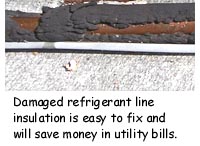 Read your manual on the best way to clean the unit. Some may be hosed off, ALWAYS TURN OFF THE POWER when cleaning them. Others require more complex cleaning. A dirty AC will waste a lot of energy. When in doubt have a professional clean it regularly, usually at least once a year.
Read your manual on the best way to clean the unit. Some may be hosed off, ALWAYS TURN OFF THE POWER when cleaning them. Others require more complex cleaning. A dirty AC will waste a lot of energy. When in doubt have a professional clean it regularly, usually at least once a year.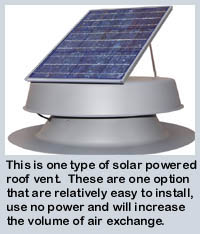
These will help keep he attic spaces cool. Ideally the attic is the same temperature as the outside air. In the summer, I routinely enter attics that are as high at 145 degrees! Ventilation and insulation are both critical to keep this heat away from your living space. If your attic has less then 12 inches of insulation consider having more added. This will pay for itself in heating in winter and keep you much more comfortable in summer.
When re-roofing a home, consider using light colored coverings. They will reduce the heat from the sun. We always recommend silver coating un-coated torch down roofs. It will extend their life and help cool your home.
Use automatic thermostats with timers to control your cooling system. Be sure your air filters are clean, and your ductwork is tight, well insulated and free from leaks. We see leaking ductwork every day!
We recommend that you plant trees that will drop their leaves in winter on the south and west side of homes. This way you have shade in summer and the sun can naturally heat the home in winter. Remember to keep all plants trimmed away from the building.


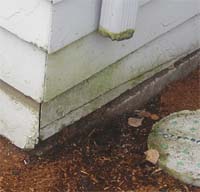
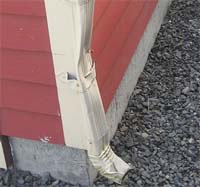
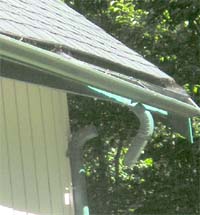
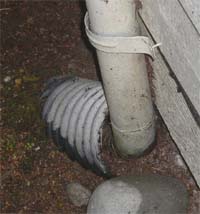
 If there is a negative grade (soil sloped to the home) water may puddle next to the foundation. Where possible, always have soil graded away from the structure. Consider repairing any concrete walks or patios that may slope to the home
If there is a negative grade (soil sloped to the home) water may puddle next to the foundation. Where possible, always have soil graded away from the structure. Consider repairing any concrete walks or patios that may slope to the home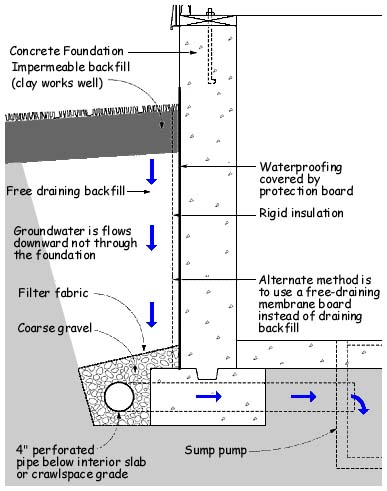
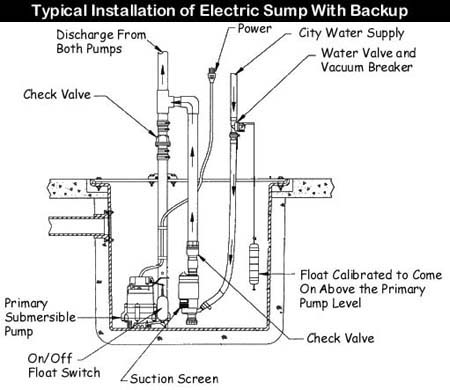

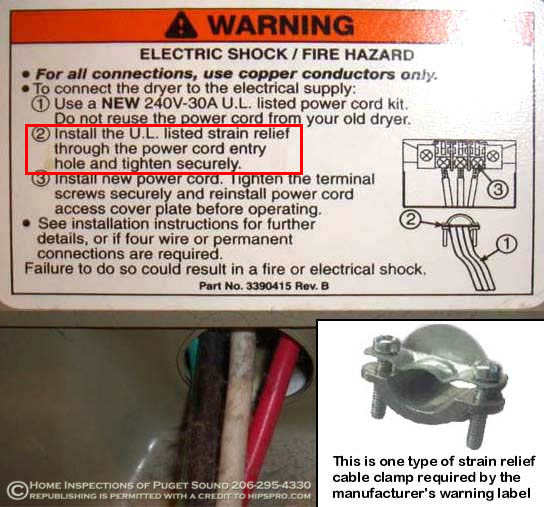
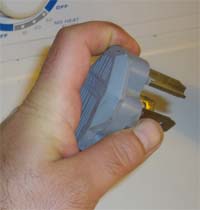
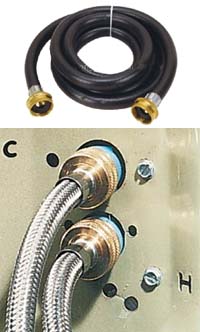
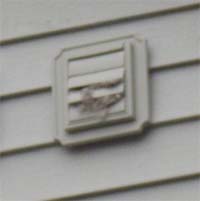
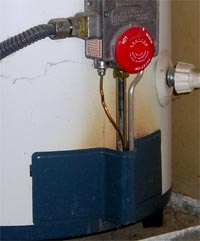 This hot water heater has exhaust rollout. Improper flue design or inadequate air supply can cause combustion gasses to vent into the home. If your heater has these stains please have it checked out.
This hot water heater has exhaust rollout. Improper flue design or inadequate air supply can cause combustion gasses to vent into the home. If your heater has these stains please have it checked out.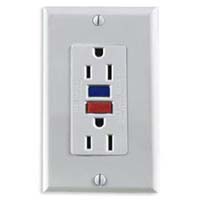 GFCIs
GFCIs 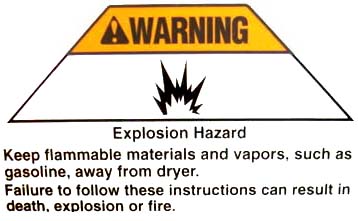

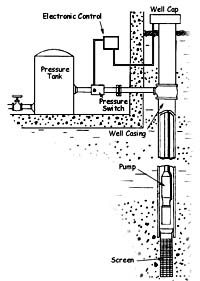
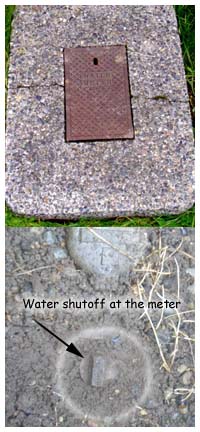 Everyone should know where and how to turn off all utilities to your home. We will often see these shutoff locations inaccessible. Never block a gas meter shutoff valve, water shutoff or breaker panel! In an emergency you must be able to shut these off or risk fire, explosion, electrocution, serious water damage or even death.
Everyone should know where and how to turn off all utilities to your home. We will often see these shutoff locations inaccessible. Never block a gas meter shutoff valve, water shutoff or breaker panel! In an emergency you must be able to shut these off or risk fire, explosion, electrocution, serious water damage or even death.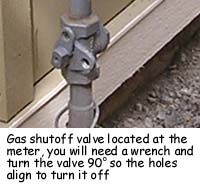
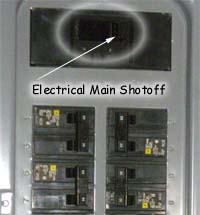 Electricity -
Electricity - 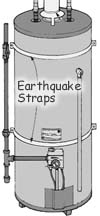 you can replace each fuse in the proper location and not mix up the amperages of the circuits. Most older homes also have 2 or more pull out fuse holders, so remove these also.
you can replace each fuse in the proper location and not mix up the amperages of the circuits. Most older homes also have 2 or more pull out fuse holders, so remove these also. 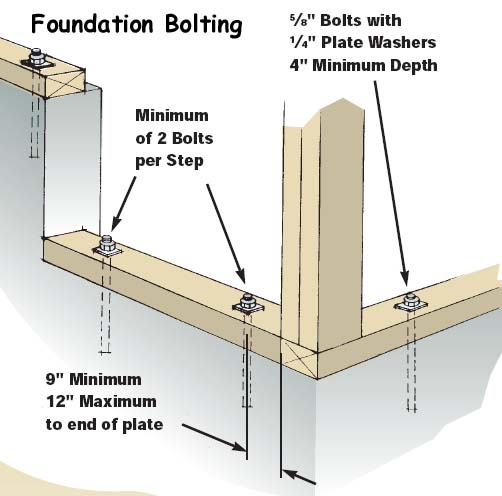
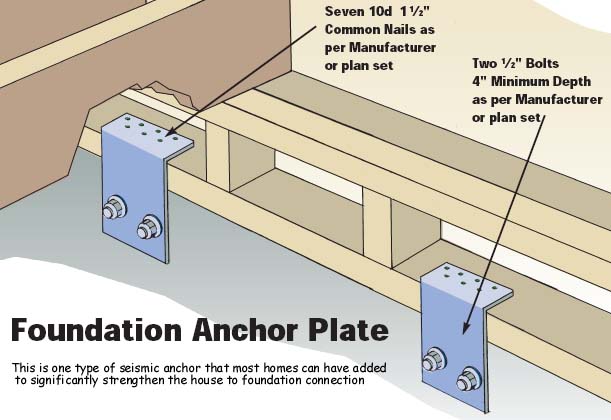
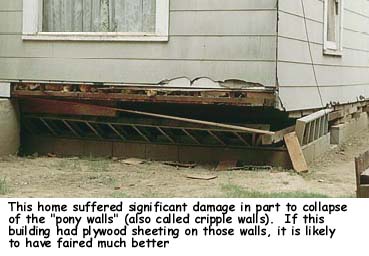
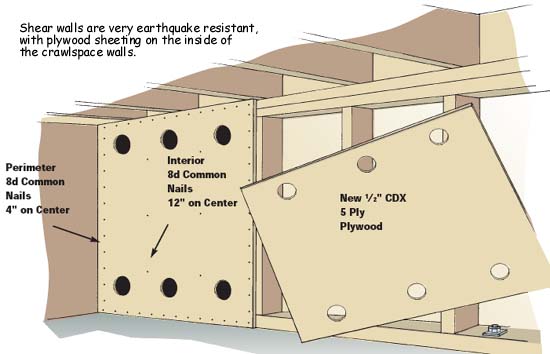
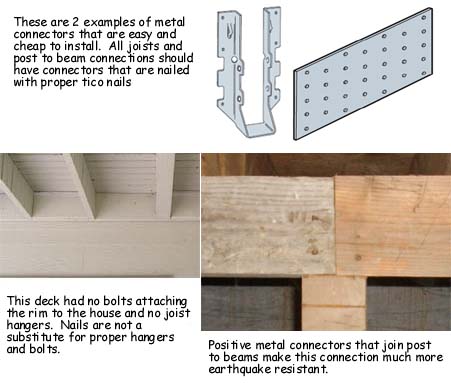
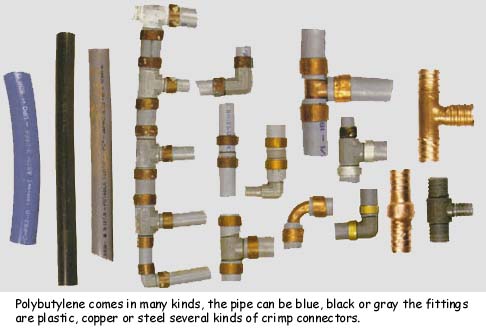
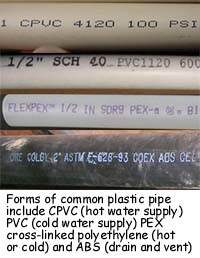 not admitting any legal liability. This settlement may applies to more then 6 million homes with the faulty plumbing. The time line for inclusion in the settlement is running out, and
not admitting any legal liability. This settlement may applies to more then 6 million homes with the faulty plumbing. The time line for inclusion in the settlement is running out, and 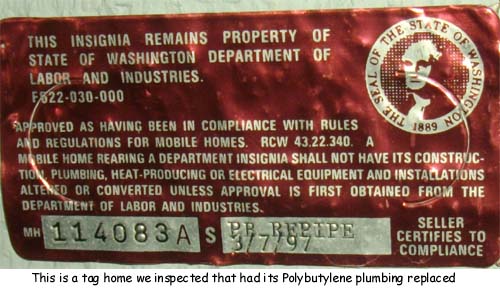
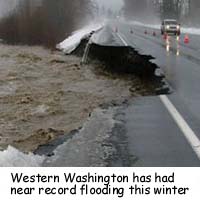 Wells:
Wells: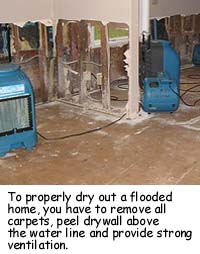
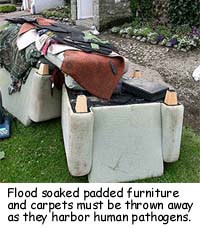 Remove and dispose of carpet saturated with “black water”. Always remove and dispose of carpet padding saturated with “gray” or “black water”. Carpet padding can be restored if it has been wet from clean water less than 48 hours and only part of the padding in a room is wet. Read the rest of these guidelines here:
Remove and dispose of carpet saturated with “black water”. Always remove and dispose of carpet padding saturated with “gray” or “black water”. Carpet padding can be restored if it has been wet from clean water less than 48 hours and only part of the padding in a room is wet. Read the rest of these guidelines here: 
